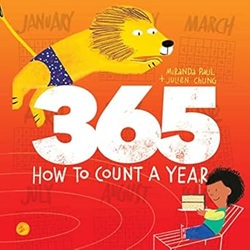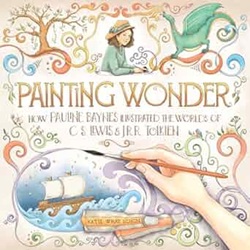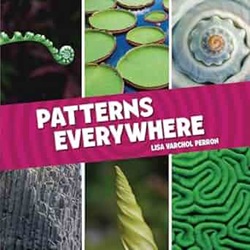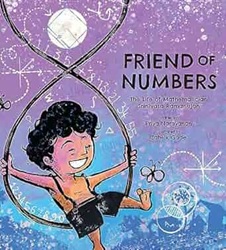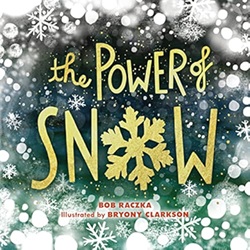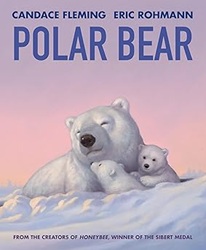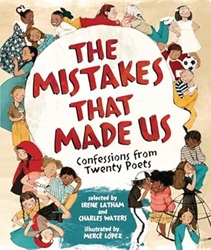Review of 365: How to Count a Year, by Miranda Paul & Julien Chung
How to Count a Year
by Miranda Paul & Julien Chung
Beach Lane Books, 2023. 44 pages.
Review written October 26, 2023, from a library book.
Starred Review
365 is a wonderful kid-friendly picture book about different units of time and how many of them make up a year. It’s bright and colorful and gives examples that will make kids laugh.
The start is basic:
It takes the Earth 365 days to spin around the sun.
But the book quickly gets more creative:
That’s 365 “Good mornings,”
365 “Good nights,”
and, hopefully, 365 clean pairs of underwear.
Then it goes on to talk about things that might happen 52 times in the 52 weeks of a year.
And next are groups of 12 things that happen monthly. Like cleaning the fish tank or getting a magazine.
And if 365, 52, and 12 are too big for you, it all comes back to 1 year, which, of course, is best measured in birthdays.
But that’s not all!
And right after that party is over,
you’ll probably start asking …how long until next year’s celebration?
The answer —
8,760 hours —
might seem like forever.
And then they go on to minutes and seconds in a year.
A spread at the end tells us:
But the good news is that you can group those
seconds into minutes and minutes into hours and hours into sunsets and sunrises and good mornings and good nights and clean (or dirty) underwear, flavors of the day, Friday night spills, or Saturday sleep-ins, so the countdown simply becomes…1 marvelous collage of 1 year in the life of you.
How will you count your year?
It’s all colorful and fun and directly relates the somewhat abstract concept of time to kids’ lives. There’s a bonus page at the back telling how much time or how many times certain things happen in a year.
A beautiful introduction to the mathematics of time for young children.
mirandapaul.com
julienchung.com
Find this review on Sonderbooks at: www.sonderbooks.com/Childrens_Nonfiction/365_how_to_count_a_year.html
Disclosure: I am an Amazon Affiliate, and will earn a small percentage if you order a book on Amazon after clicking through from my site.
Disclaimer: I am a professional librarian, but the views expressed are solely my own, and in no way represent the official views of my employer or of any committee or group of which I am part.
What did you think of this book?
